Austria is one of the more underrated countries in Europe despite having some of the continent’s most quaint towns, epic scenery and arguably the world’s best opera house! This 7-day itinerary in Austria takes you through some of the country’s highlights, allowing you to soak up the culture, cuisine and countryside.
If the only image you have of Austria is the von Trap family dancing around in their lederhosen, you’re going to be blown away by the beauty and variety of this small but spectacular country.
Visit picture-perfect Hallstatt, hike or ski through the stunning trails around Innsbruck and witness the impressive architecture of Vienna and Salzburg. Trips along the Danube, cozy meals in the mountains and listening to Mozart and Strauss are an absolute must. As is trying a slice of traditional chocolate sachertorte and some schnitzel, of course!
You’re sure to fall in love with the country’s character and charm. With mountain village taverns welcoming you in like old friends and the capital’s cool bars treating you like royalty, you’re sure to have a trip to remember!
This 7-day Austrian adventure will give you enough to enchant you while leaving you longing to return time and time again.
Disclaimer: This post contains affiliate links. This means that should you click on certain links, and then subsequently purchase a product, I will receive a small commission. It costs nothing extra to you but helps keep my site running. Thank you for supporting me in this way.
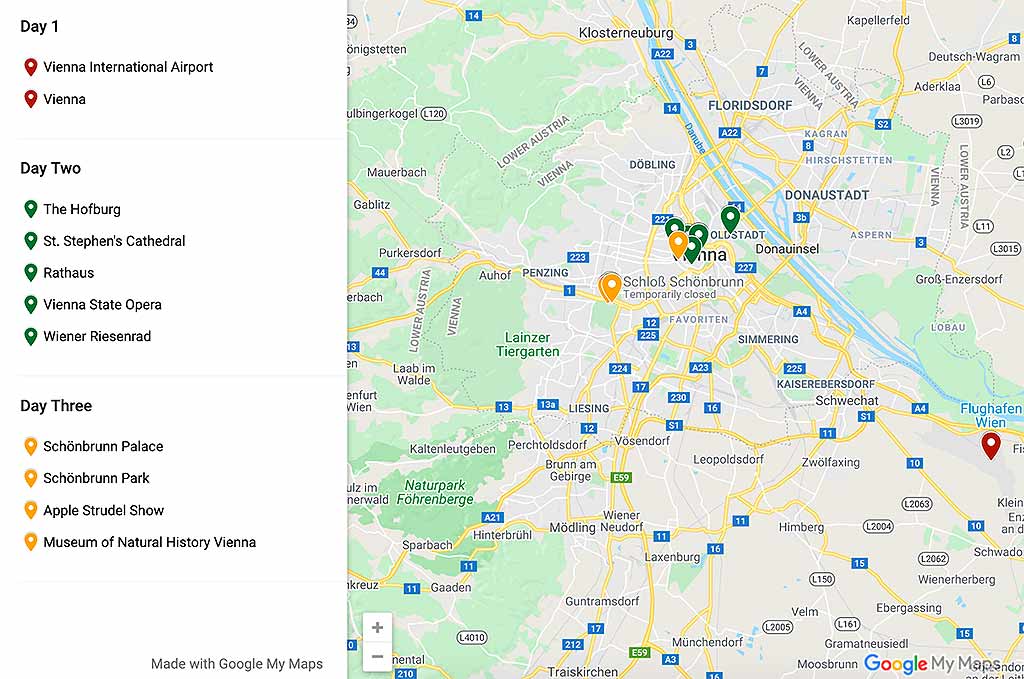
Table of Contents
Austria itinerary: Day 1- Arrive in Vienna
The Austrian capital, situated on the banks of the Danube, is considered the cultural capital of Europe. Home to imperial palaces, endless balls, and of course, music. You could spend weeks walking in the footsteps of musical giants like Mozart, Beethoven, and Schubert or emperors and empresses of the glittering Hapsburg dynasty. You’ll feel like you’ve stepped back in time discovering all this exquisite city has to offer.
How to get from/to Vienna International Airport
By Train
City Airport Train (CAT)
The CAT will take you directly from the airport to the city center with no stops along the way. The train runs from 06:00-23:30 and trains leave the airport every half hour, at 6 and 36 minutes past the hour arriving at WIEN MITTE. Once you collect your bags, follow the green CAT signs. Tickets can be purchased online or in-person at the CAT terminal.
Time: 16 minutes
Cost: 11 EUR
S7 Commuter Train
Running on the same tracks as the CAT, the S7 Schnellbahn takes a few minutes longer, costs a few euro less, but will get you to the same destination of WIEN MITTE. After you get your bags, follow the Schnellbahn signs (an ‘S’ in a circle). You can purchase tickets from the machines at the top of the escalator and you can pay by cash or card. Be sure to validate your ticket when purchasing to avoid issues on board the train. Get on the train that leaves in the direction of ‘Floridsdorf.’ Trains run daily at 17 and 42 minutes past the hour and run between 04:00 and midnight.
Time: 26 minutes
Cost: 4 EUR
ÖBB Railjet
Railjets depart every thirty minutes from the airport to Vienna Main Station or Wein Meidling Station and run between 06:33 to 11:03 daily.
Time: Vienna Main- 15 minutes
Wein Meidling- 30 minutes
Cost: 4.20 EUR
Bus
Vienna Airport Lines
Another airport transportation option is bus service through Vienna Airport Lines. It’s cheaper than the CAT and faster than the S7. There are three lines that offer service to different locations throughout the city. After you pick up your bags, follow the signs for buses. Buses run from 04:50-00:20 and depart every 30 minutes at 20 and 50 minutes past the hour. Purchase tickets from the driver on the bus.
Time: 22 minutes
Cost: 8 EUR
Taxi
If you’re not on a budget, taking a taxi is the most convenient way to get from the airport to your destination. Just past the baggage claim, out the main doors, taxis are lined up. Some taxis do accept card, but be prepared with euro just in case.
Time: 20 minutes
Cost: 30-40 EUR
Private Airport Transfer
Coming in at about the same price as a taxi, private airport transfer can be a much more comfortable and relaxed way to get from the airport to the city center. You can pre-book online and your driver will be waiting for you as you make your way out to the baggage claim area.
Time: 20 minutes
Cost: From 30 EUR
Where to stay in Vienna
Perfectly located in the center of Vienna’s 1st District–a UNESCO World Heritage Site–many historic sites are within walking distance and friendly staff make it a top choice.
Click here for more information and the latest prices.
Located in Vienna’s 8th district, each room is dedicated to a specific Austrian winemaker and the hotel has a wine list of over 450 wines.
Click here for more information and the latest prices.
You might be interested in my 3-day Vienna itinerary.
Austria itinerary : Day 2 – Explore Vienna
Hofburg Palace
The buildings of the Vienna Hofburg make up one of the largest palace complexes in the world. For over 600 years, the palace was the winter home to Austrian dynasty, the Hapsburgs. The palaces dates to the 13th century and has been extended by resident emperors who occupied the residence until 1918. Since 1946 the massive complex has been home to the office of the Austrian Federal President. Today, you can visit the Sisi Museum which offers visitors insight into the complex and fascinating life of Empress Elisabeth. Over 300 of her personal items, including her famous dresses, are on display. The Imperial Apartments are also open and allow visitors to see how Emperor Franz Joseph and his wife Sisi lived.
Hours: September-June 09:00-17:30, July and August 09:00-18:00
Cost: 15 EUR
St. Stephen’s Cathedral
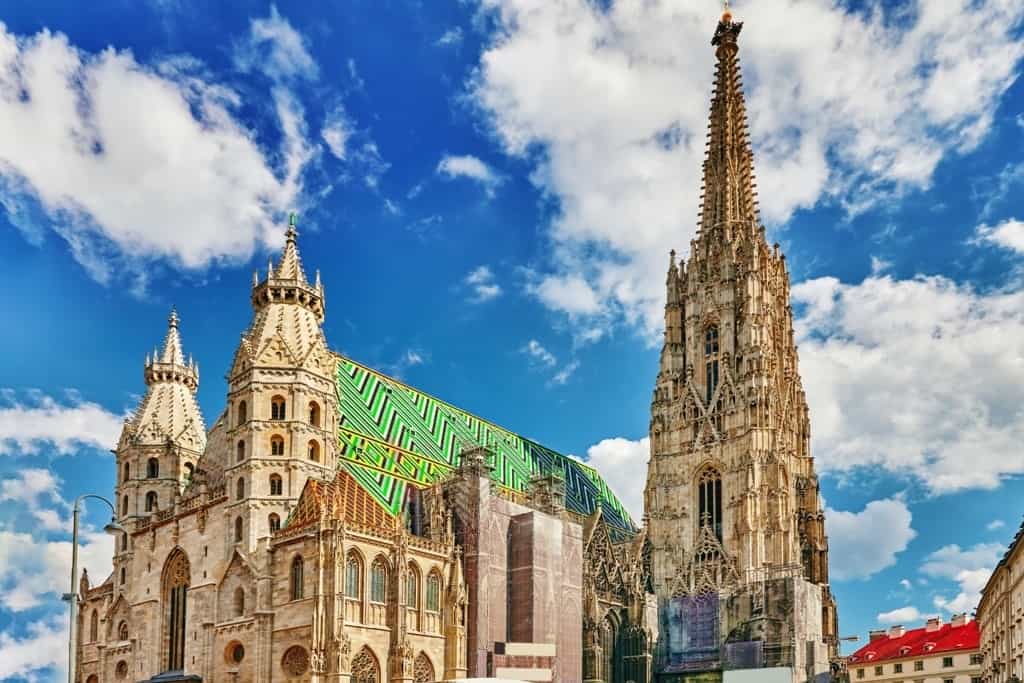
The tower of St. Stephen’s Cathedral, with its famous multi-colored, tiled roof has dominated Vienna’s skyline since it’s construction. The Gothic church is the seat of the Archbishop of Vienna. Step inside to see the church’s 18 alters, small chapels, and tombs and catacombs. You can make the ascent up the 136-meter-high south tower for unbeatable views of the city. There is no elevator in the south tower, there are 343 stairs, and it takes about 10-15 minutes to climb.
Hours: Monday-Saturday 09:00 to 11:30 and 13:00 to 16:30
Sundays and public holidays 13:00 to 16:30
Cost: Free
South Tower
Hours: 09:00-17:30 daily
Cost: 5 EUR
Rathaus
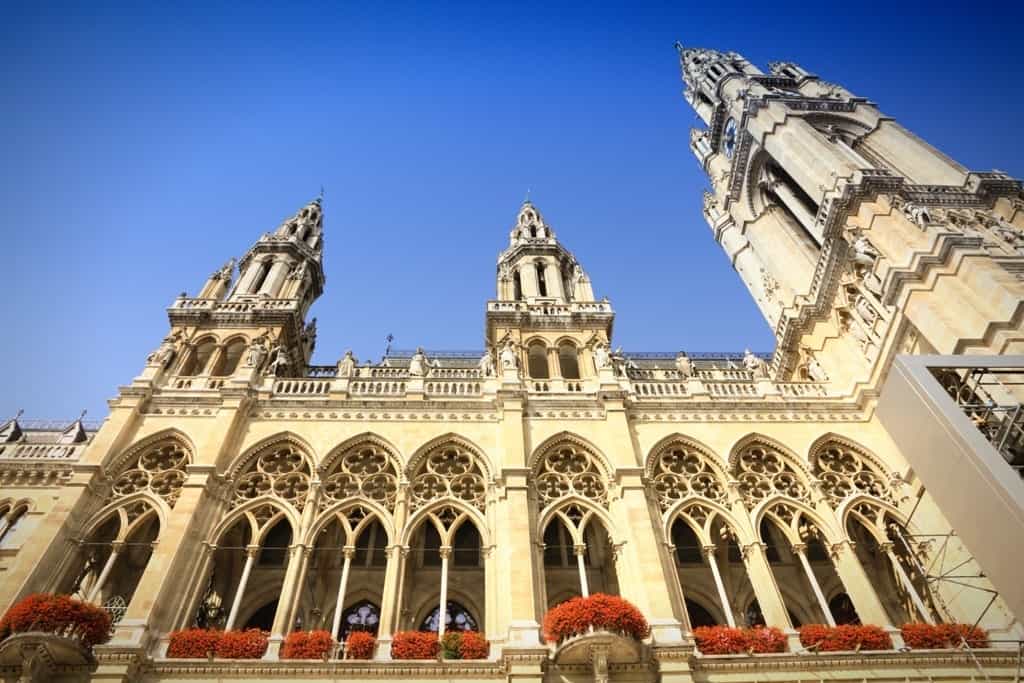
Vienna’s Neo-Gothic style Town Hall was completed in the 1800s to house the offices of the mayor. The Rathaus had 5 towers, with the middle tower being the largest and topped by the Rathausman statue. Step inside for a free guided tour at specific times throughout the week
Hours: Guided tours are available on Monday, Wednesday, and Friday at 13:00
Cost: Free
Vienna State Opera
In a city that is so steeped in music and culture, no visit would be complete without a night at the opera. The opera house in Vienna is considered one of the finest in the world with its impressive Neo-Renaissance architecture and the inside feels more like a palace than an opera house. Visit during the day for a 40-minute guided tour of the building. Or, for an evening of luxury, visit at night for an opera composed by one of Vienna’s musical giants.
Hours: tours are given multiple times throughout the week, check the opera house’s website for available times during your visit.
Cost: 9 EUR for guided tour, operas vary by performance
Weiner Riesenrad
Take a ride on Vienna’s “Giant Ferris Wheel” which was originally built in 1897. The 65-meter-tall ferris wheel that stands today isn’t the original, but a ride at sunset is an experience you don’t want to miss. A full rotation takes about 20 minutes and is a nice way to slow down and take in the beauty of Vienna.
Hours: 10:00-19:45+
Cost: 10 EUR
Austria itinerary: Day 3- Vienna
Schönbrunn Palace
Get an early start and head just outside of the city center to the magnificent Schönbrunn Palace. This 1,441-room Baroque palace is considered one of the most important historical, cultural, and architectural building in all of Austria. The former hunting grounds of the royal court, the Schönbrunn Palace as you see it today was largely built in the mid 1700s by Empress Maria Theresa. Since that time this palace has been the summer residence to the Hapsburgs. The tour of the palace will take you through 40 of the palace’s splendidly furnished rooms. You can see the Mirror Room, where a 6-year-old Mozart gave his very first concert.
Hours: April-June & September-October 08:00-17:30
July-August 08:00-18:30
November-March 08:00-17:00
Cost: 17.50 EUR
Schönbrunn Park
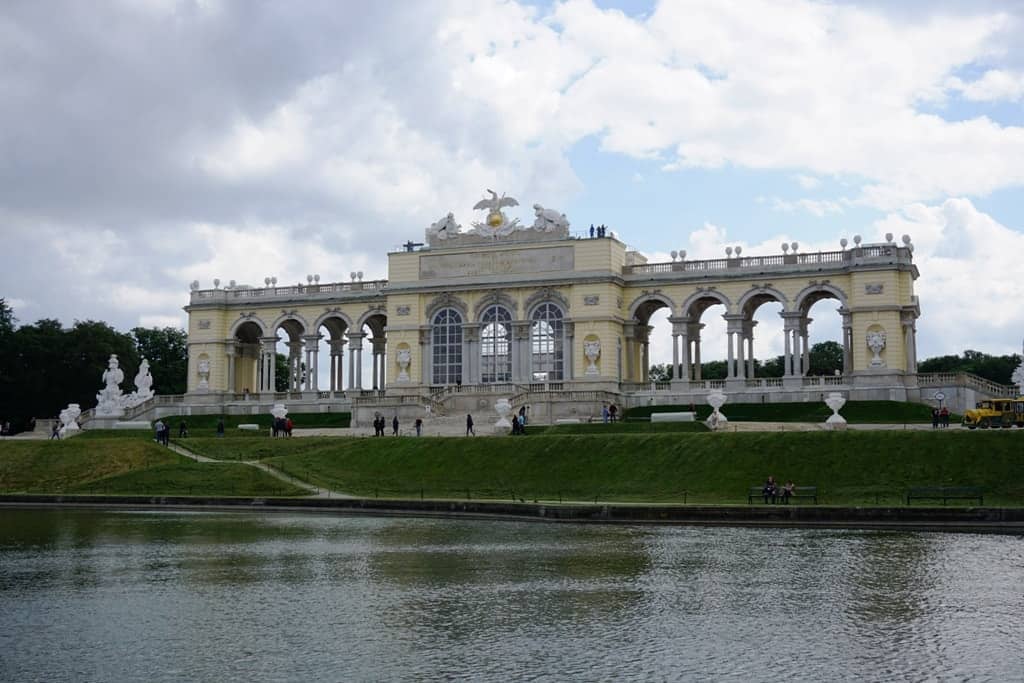
Once you’ve successfully explored the interior, head out the gardens. The park has been open to the public since 1779. Stroll down the Great Parterre and admire the 8 sections of perfectly manicured, symmetrical gardens of the Crown Prince Garden. At the end of the pathway you’ll arrive at the centerpiece of the Great Parterre–the Neptune Fountain. Beyond the fountain stands the Gloriette. Take the time to go to the top of the hill for a great view of the palace and the city behind it.
Hours: November-February 06:30-17:30
February-March & September-October 06:30-19:00
April & August 06:30-20:00
May-July 06:30-21:00
Cost: Free
Apple Strudel Show
If you’re going to try apple strudel in Vienna, you might as well do it like a Habsburg! You can watch how the tasty dessert is made in the court bakery of the Schönbrunn Palace’s Café Residenz, where it has been baked for centuries. The show lasts about 20 minutes an at the end of the show you’ll get to indulge in a freshly baked Viennese apple strudel. You’ll also get to take home a copy of the recipe so you can replicate the treat when you get home.
Hours: 11:00-16:00, shows every hour
Cost: 11.90 EUR
Natural History Museum
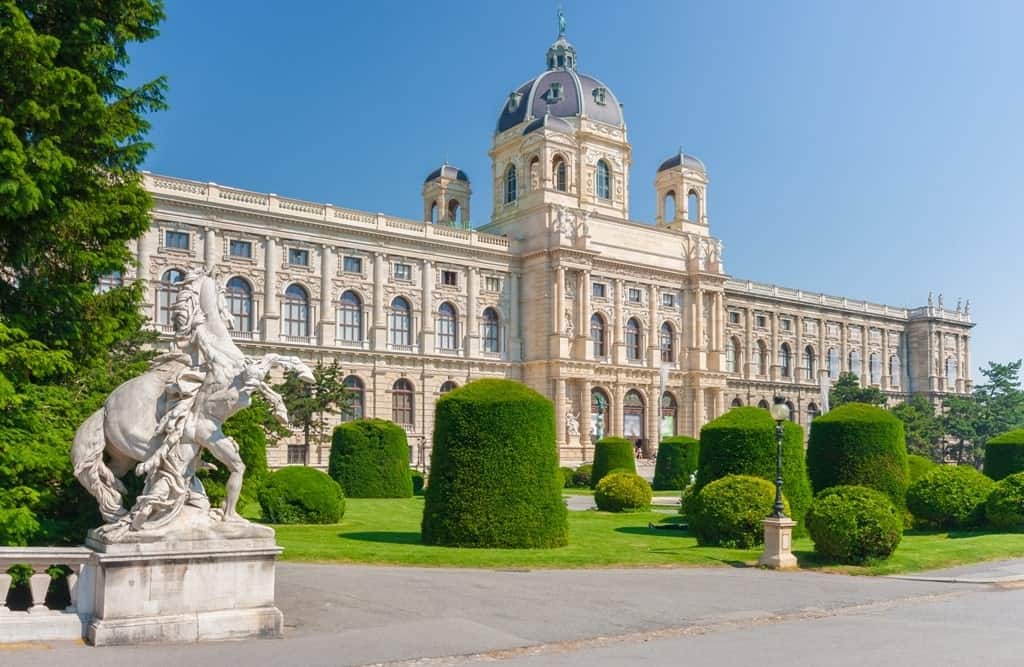
Filled with over 30 million objects, Vienna’s Natural History museum is one of the most important in Europe. The museum is located in a beautiful palace complex and has something for everyone from massive dinosaur skeletons and meteorites to impressive architecture. If you have time, walk across the street to the Kunsthistoriche Museum which features paintings, sculptures, and antiquities that once belonged to the Hapsburgs
Hours: Thursday-Monday 09:00-18:30
Wednesday 09:00-21:00
Closed on Tuesday
Cost: 12 EUR
Austria itinerary: Day 4- Travel to Salzburg
You can also see the map here
Now that you’ve sufficiently explored Austria’s capital city, is time to visit “the jewel in its crown,” Salzburg. There are three ways to get between the two cities:
By Train
By far the easiest way to travel from Vienna to Salzburg is by train. The journey between the cities takes about 2 hours and 40 minutes and trains depart to Salzburg on the hour between 06:00 and midnight.
By Rental Car
If you want a little more flexibility to get out and see some of the countryside on your way to Salzburg, renting a car may be the way to go. The autobahn route runs parallel to the railway line almost the entire journey. Transit time depends on the traffic and the weather but usually takes less than 3.5 hours.
By Plane
While there are flights that go between Vienna and Salzburg, taking a flight form one city to the other doesn’t really make sense when you can take the train or drive in about three hours. Once you account for transit time to the airport, check-in, security…etc., traveling by plane would end up taking much longer and being more expensive than necessary.
Where to stay in Salzburg
This 5-star hotel dates back to 1377 and is perfectly located in the heart of Salzburg’s Old Town. The hotel was recently renovated and it’s centrally located to the sights.
Click here for more information and to check the latest prices.
Hotel Vier Jahreszeiten Salzburg
This traditional hotel is conveniently located near the Mirabell Palace. The Vier Jahreszeiten is within walking distance to the train station and Old Town.
Click here for more information and to check the latest prices.
Situated along the Salzach River, the city whose name literally translates as Salt Fortress, is Austria’s 4th largest city. It’s home to some of history’s most fascinating figures. 18th century composer Wolfgang Amadeus Mozart was born here and Salzburg isn’t going to let you forget it. You can walk in the footsteps of Maria and the von Trapp family as Salzburg was home to the singing family made famous by the award-winning film and musical The Sound of Music. Churches, castles and palaces decorate this fairytale city that’s home to the world’s most famous chocolate cake.
Salzburg Fortress
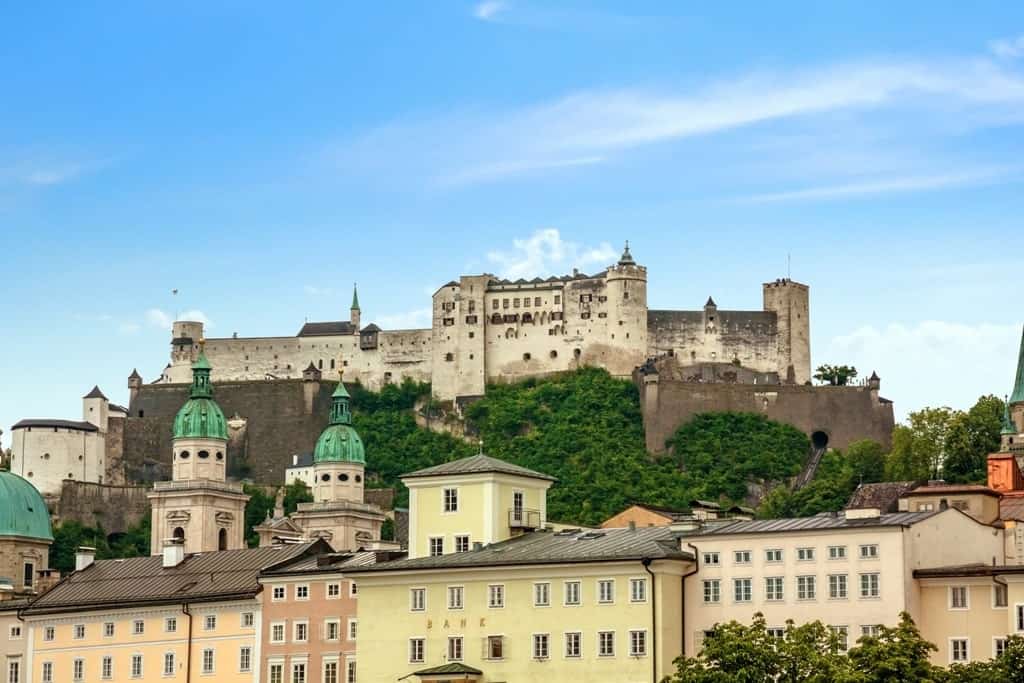
The dominating fortress that sits atop the Festungsberg has been overlooking the city of Salzburg since the 10th century. Hohensalzburg is one of the largest intact fortresses in all of Europe and has never been overtaken by foreign forces. It was once frequented by prince-archbishops and you can explore their former apartments. The cherry on top is the view. The panorama of the Old Town and the Alps is awe-inspiring. All tickets include a roundtrip Fortress funicular ride.
Hours: January-April 09:30-17:00
May-September 09:00-19:00
October-December 09:30-17:00
Cost: 12.90 EUR
Mirabell Palace and Gardens
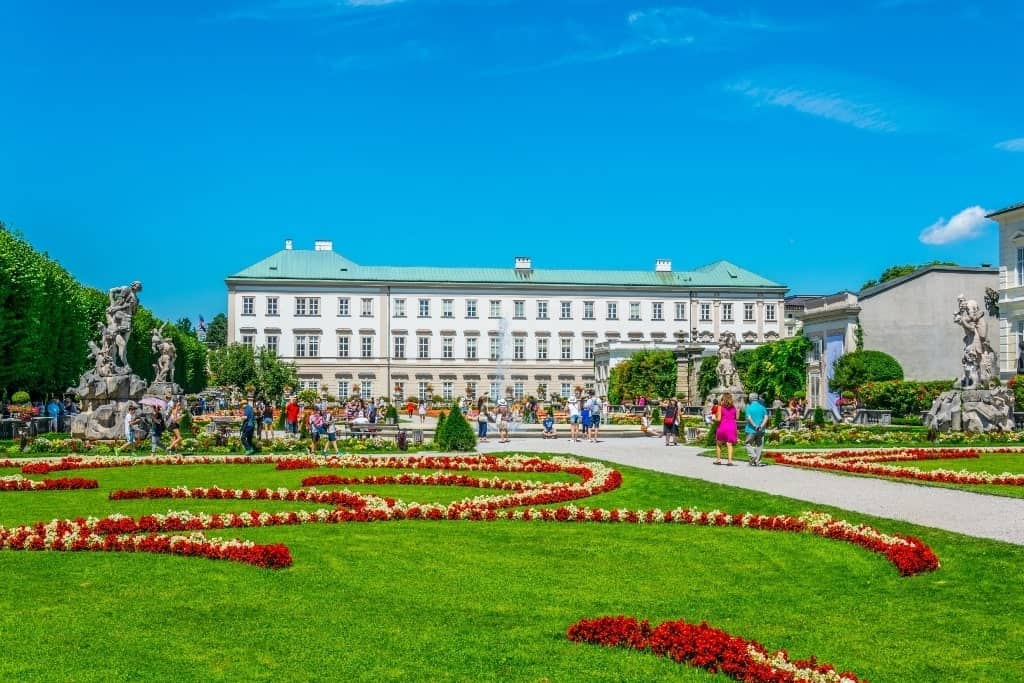
Just a 15-minute walk from where the funicular lets you off is Mirabell Palace. You might recoznige the perfectly manicured gardens from The Sound of Music. It’s at the Pegasus Fountain, entrance steps, and round pond where the Do-Re-Mi scene was filmed. The palace was built in 1606 by prince-archbiship Wolf Dietrich. The palace’s Marble Hall is considered one of the most beautiful wedding venues in the world, and you might even be lucky enough to catch a glimpse of a couple on their lucky day.
Hours: Mirabell Palace and Angel Staircase: daily from 08:00-18:00
Marble Hall: Monday, Wednesday, Thursday 08:00-16:00, Tuesday, Friday: 13:00-16:00
Gardens: 06:00-dusk
Cost: Free
Altstadt (Old Town)
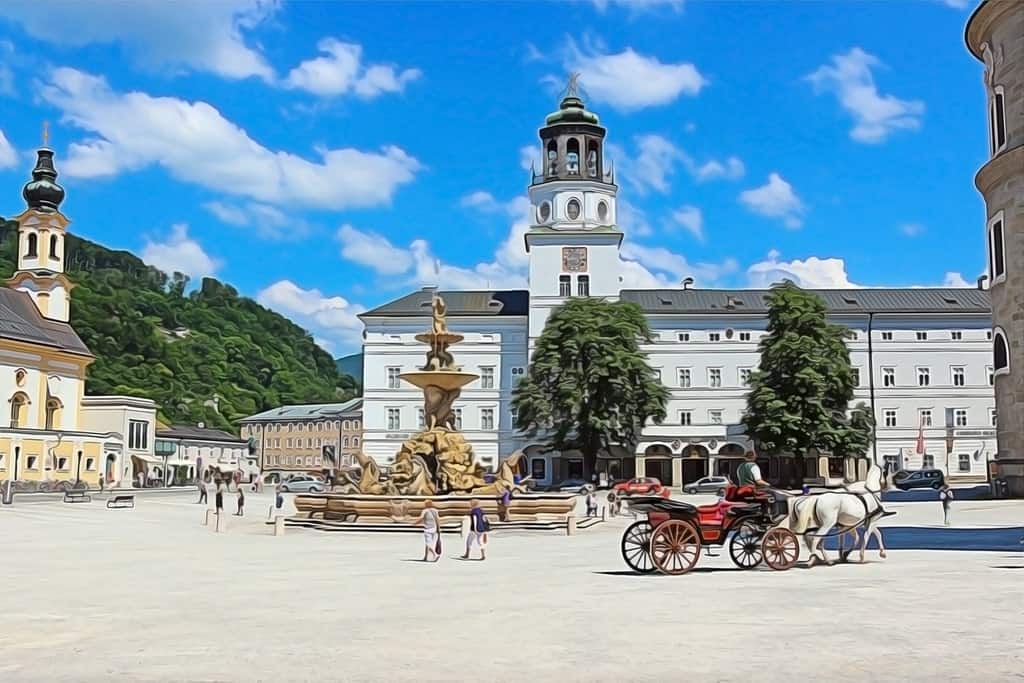
You’ve already seen the Old Town from the viewpoint of the Fortress, now it’s time to get up close and personal! Take a stroll down the Medieval shopping street of Getreidgasse. You’ll feel like you’ve stepped back in time, with the exception of the fancy McDonald’s. Each shop displays a sign above their door. In the Middle Ages, the city’s population was mostly illiterate, and these signs helped customers located skilled craftsmen and tradesmen such as blacksmiths, hat makers, and locksmiths.
St. Peter’s Abbey
Founded in the 7th century, St. Peter’s is the spiritual heart of Salzburg. The monastic order that founded the monastery still exists today and is the oldest order in the German-speaking world. The Abbey (closed for renovations until September 2019) is a blend of Romanesque, Renaissance, and Rococo architecture. The catacombs are a must-see and are built right into the side of the Mönchsberg on which the Salzburg Fortress sits. The cemetery was the backdrop for the scene in The Sound of Music when the vonn Trapp family is fleeing from the National Socialists.
Hours: Catacombs: May-September 10:00-12:30 pm, 13:00 pm-18:00
October-April 10:00-12:30 pm, 13:00-17:00
Cemetery: Summer 06:30-19:00
Winter 06:30-17:30
Cost: Catacombs: 2 EUR
Cemetery: Free
Hellbrun Palace Trick Fountains
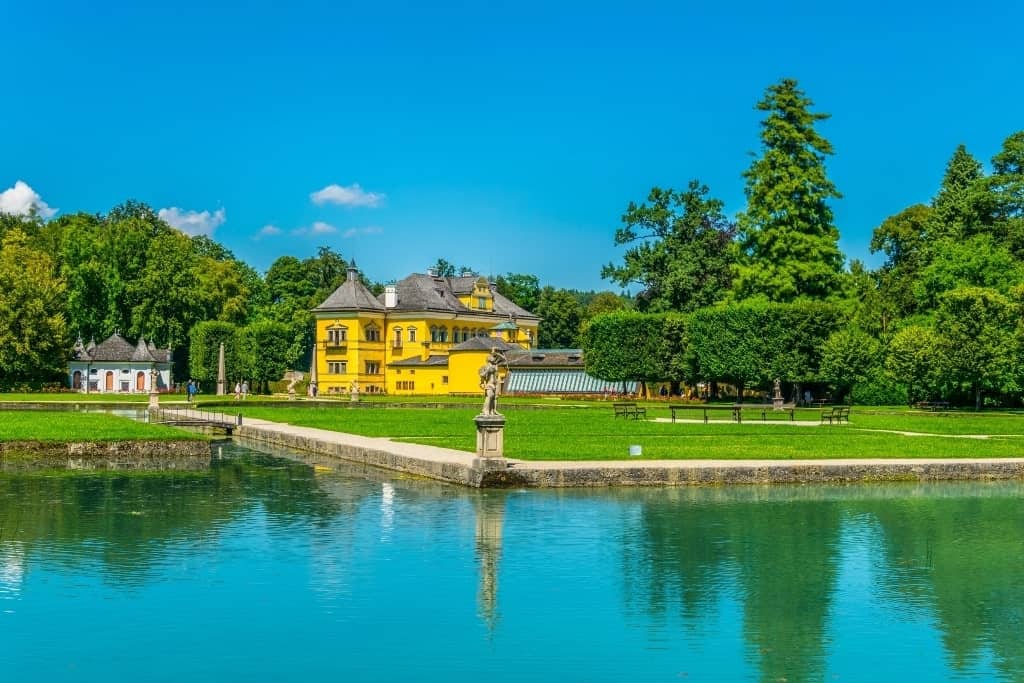
Most visitors come to see the gazebo from The Sound of Music. While this is definitely a good reason to visit Hellbrun Palace, also worth your while are the Trick Fountains. The palaces fountains have been entertaining visitors for over 400 years. Hidden water jets, mysterious grottos, and water-powered figures will keep you on your toes and get you a little wet!
Hours: April 1 – November 3
April: 09:00-16:30
May, June: 09:00-17:30
July, August: 09:00-18:00
September: 09:00-17:30
October, November: 09:00-16:30
Cost: 12.50 EUR
Mozart’s Birthplace
A visit to the famous composer’s birthplace is an absolute must! Mozart’s birthplace is one of the most visited museums in Austria. The museum is carefully appointed and lets you stip back in time to the days of Salzburg’s most famous resident.
Hours: Daily 09:00-17:30
July, August: daily 08:30-19:00
Cost: 11 EUR
Austria itinerary: Day 5- Salzburg to Hallstatt day trip
You can also see the map here
Getting from Salzburg to Hallstatt is a little logistically challenging, but well worth it!
By Train
There is no direct train from Salzburg to Hallstatt, so you will have to make one change. The beautifully scenic journey by train takes about 2 hours. Once you arrive at the Hallstatt main station, you will find yourself on the opposite side of the lake from the village. You will have to take the ferry across, which is actually an advantage. The views approaching Hallstatt from the water are unbeatable. The ferry runs every hour and costs 2.50 EUR.
By Car
Traveling to Hallstatt by car will take just under 1.5 hours. You can take the scenic route on B158 via Fuschl, St Wolfgang, Bad Ischl and Bad Goisern or the highway route of A10 and B166 via Golling and Gosau. The former is more scenic and the latter requires and Austrian vignette, or toll sticker.
Alternatively, I suggest that you do an organized day trip to Hallstatt with a tour company.
Click here for more information and to book a half-day trip to Hallstatt.
This picture-perfect, tiny alpine village is one of the oldest still-inhabited villages in Europe. Hallstatt is home to the world’s first salt mine and is now a UNESCO World Heritage site and has become a favorite destination among tourists. Hallstatt is a huge day-trip destination from many closer large cities. Around mid-morning the day trippers start to flood the streets, so in order to enjoy some peace and quiet be sure to start your day early!
Walk the Town
Start at one end or the other and start exploring. The town is only 1 kilometer from end to end, so it won’t take you too long. There are photo-ops around every corner. If you walk all the way to the north end of the village, fast the ferry station, you will get the iconic, postcard-perfect picture with the lake, the church, and the mountains all in the frame.
Take the Funicular to the Skywalk
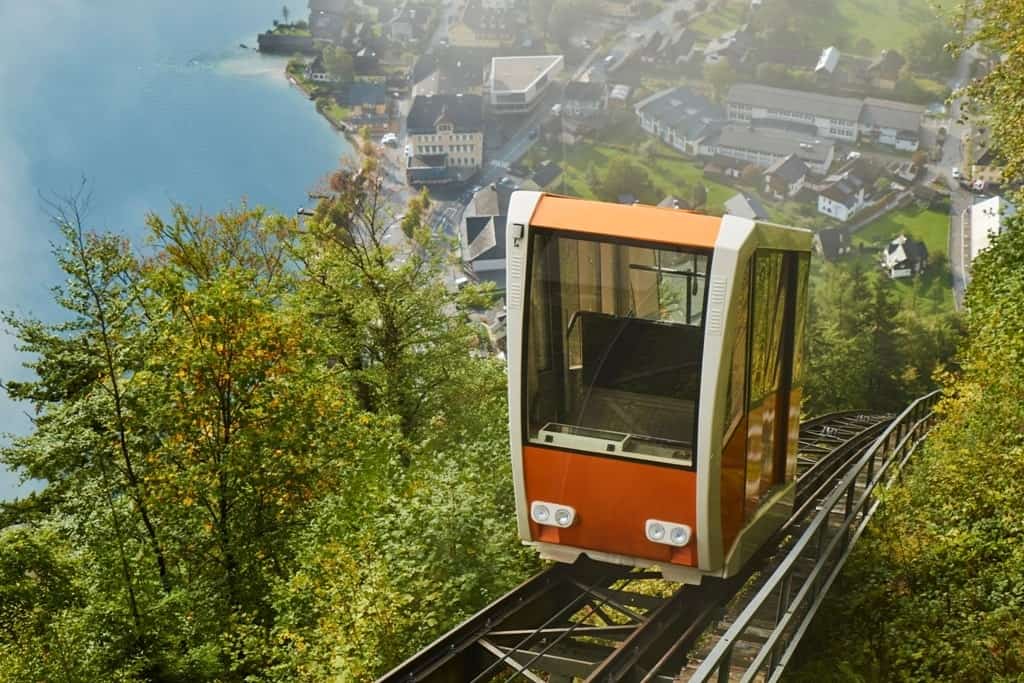
Make your way down to the south end of town and take the funicular to the top of Salt Mountain for more spectacular views. Walk out on the free-floating Skywalk 350 meters above the town of Hallstatt for a World Heritage view that’s not to be missed!
Hallstatt Salt Mine
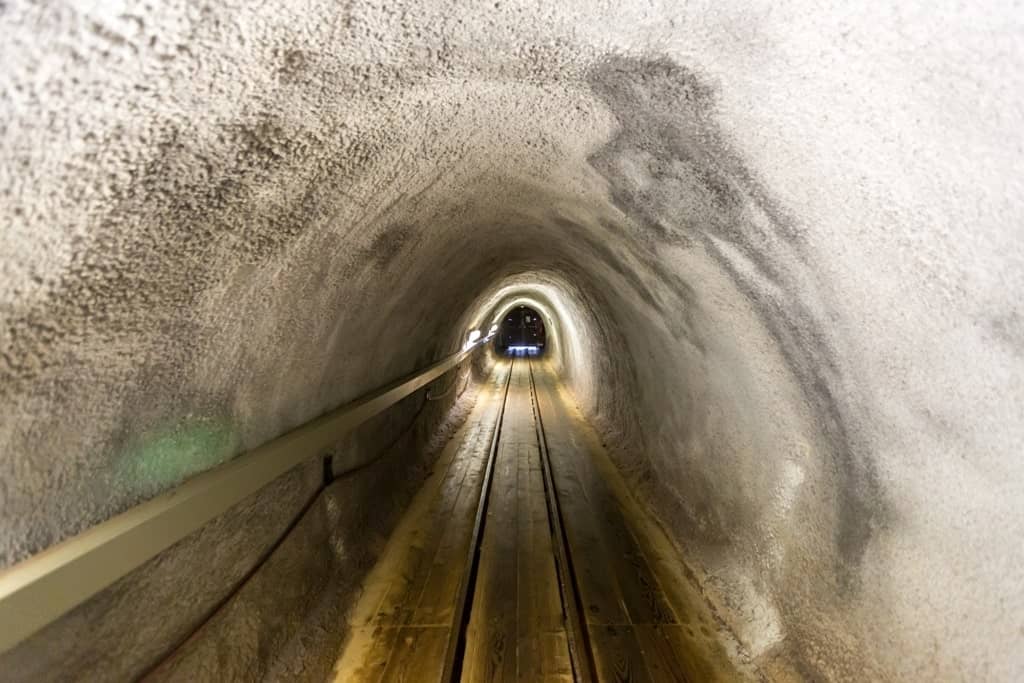
This 7,000-year-old mine is Hallstatt’s main attraction. Hallstatt owes is prosperity and fame to this ‘white gold’ and you can see for yourself the inside of the mine, the history of mining and the life of the miners who worked there. The mine also has a slide, which is a really fun way to get from one level of the mine to the other.
Hours: December-March Closed
March 09:30-14:30
April-September 09:30-16:30
October-January 09:30-14:30
Cost: 24.00 EUR
Austria itinerary Day 6- Salzburg to Innsbruck
The journey from Salzburg to Innsbuck is both simple and breath-taking at the same time meaning travellers can explore numerous places in Austria while taking in the stunning scenery en route.
By Train:
Travellers can take a direct train from Salzburg to Innsbruck in under two hours, with ticket prices starting at €9 one-way. Trains run from around 2.30am until 10pm so there are plenty of options to choose from.
By Car:
Both Salzburg and Innsbruck have a number of taxi and rental car services available so this is definitely a viable option, especially for families. Hiring a private car is also a great option for those wanting to stop off en route to take photos of the incredibly photogenic landscapes on the way.
Drivers can take various routes depending on time vs. wanting to choose a scenic trail. These include passing through places such as Zell am See, Mittersil, Gerlos Pass and Ziller Valley or dipping into Germany. It can also be fun to add the Grossglockner High Alpine Road if you have an extra 2/3 hours to spare!
Where to stay in Innsbruck
Best Western Plus Hotel Goldener Adler Innsbruck
An excellent value in Innsbruck, this hotel is located in the heart of the city. Walk only 5-minutes to reach the Imperial Palace and the Hofkirche.
Click here for more information and the latest prices.
Hotel Maximilian-Stadthaus Penz
The Maximilian Hotel is family-run one of the top-rated hotels in Innsbruck. It’s situated right at the edge Old Town and is perfectly located to all of the major sites, shopping, and dining.
Click here for more information and the latest prices.
A visit to the “Capital of the Alps” is the perfect way to end your Austrian tour. Situated between high, snow-capped mountains along the River Inn, Innsbruck is known world-wide for being a premier winter sports destination and the showcase for the Hapsburg Empire’s legacy. The versatile city is equally fun to visit in the summer and winter as activities abound year-round.
Altstadt von Innsbruck
Start your time in Innsbruck in the old town center. Cafes and restaurants fill the medieval streets and a are a great place to sneak inside, warm up for a bit, and enjoy a nice, warm apple strudel. You could easily spend an entire day exploring the Old Town as many of Innsbruck’s attractions are located in the Altstadt.
If you’re looking for the kind of love that can stand the test of time, look no further than the Golden Roof. This iconic landmark was built in 1500 to mark the occasion of the marriage of Maximilian I to Bianca Maria Sforza. The roof is adorned with 2,657 fire-gilded copper tiles and is truly brilliant when the sun hits its shimmery surface.
Hofkirche (Court Church)
This Gothic church located in the Altstadt was built in the 1553. Commissioned by Emperor Ferdinand I in memory of his grandfather Emperor Maximilian I, the Court Church contains an empty grave, or cenotaph. The construction of the massive cenotaph took over 80 years and is surrounded by 28 impressive bronze statues depicting Maximilian I’s wives, relatives, ancestors, and heroes in order to edify the emperor’s claim to the throne.
Hours: Monday-Saturday 09:00-17:00
Sundays and Holidays 12:30-17:00
Cost: 7.00 EUR
Imperial Palace (Hofburg)
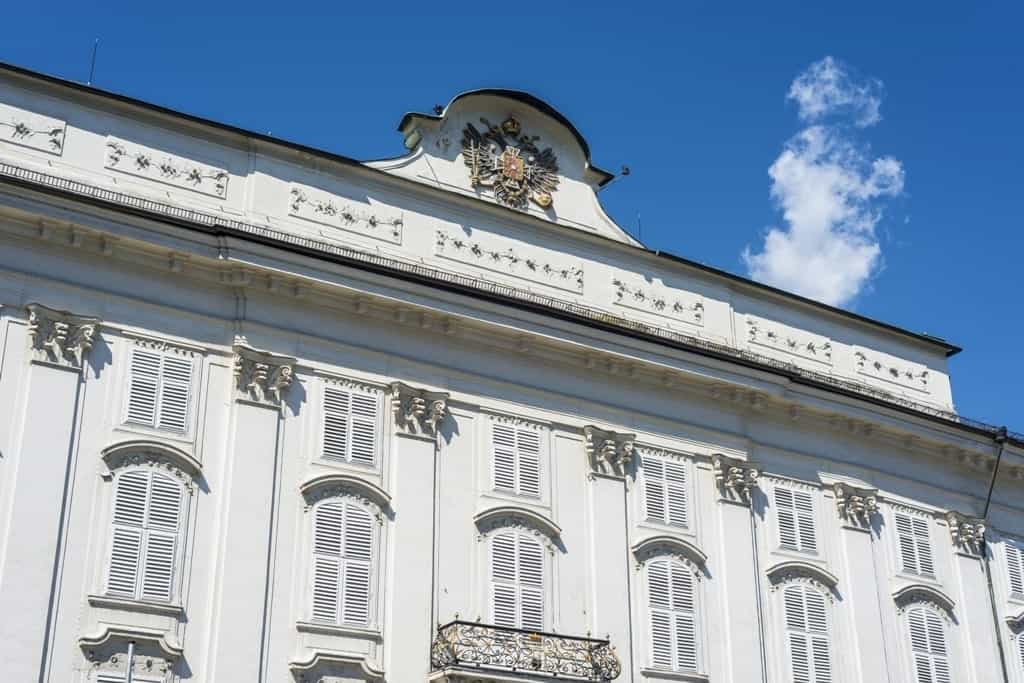
The Imperial Palace in Innsbruck is one of the three most important historic-cultural monuments in all of Austria. (One of the others being the Vienna Hofburg).The palace was built in the 15th century by Emperor Maximilian I. The Innsbruck Hofburg underwent extensive renovations in the 18th century under the influence of Empress Maria Theresa. The meticulously restored former imperial residence now serves as a museum where you can go see how the Hapsburgs lived in luxury. Only a small portion of the palace is open to visitors, but it is well worth a visit.
Hours: Daily 09:00-17:00
Cost: 9.50 EUR
Innsbrucker Nordketten Bahnen
One of the best ways to experience Innsbruck is from the top of the surrounding mountains. Hop on the Nordkettenbahnen at Innsbruck Congress (560m) to climb at a 46 percent incline to reach the Hungerburg (860m) with gorgeous cloud-free panoramas. Once you get off at Hungerburg, you will have to go to a different building to catch the cable car to Seegrube (1905m).
From Seegrube you will catch the next cable car to 2256m above sea level. To make it to the summit you will have to hike the remaining 78m, but don’t worry—it only takes 15 minutes. At the top you’ll see the summit cross and be rewarded with 360-degree views that stretch all the way to Italy in the south and Germany in the north.
Hours: For up-to-date timetables check the Innsbrucker Nordketten Bahnen website here
Cost: 36.50 EUR
Bergisel Ski Jump
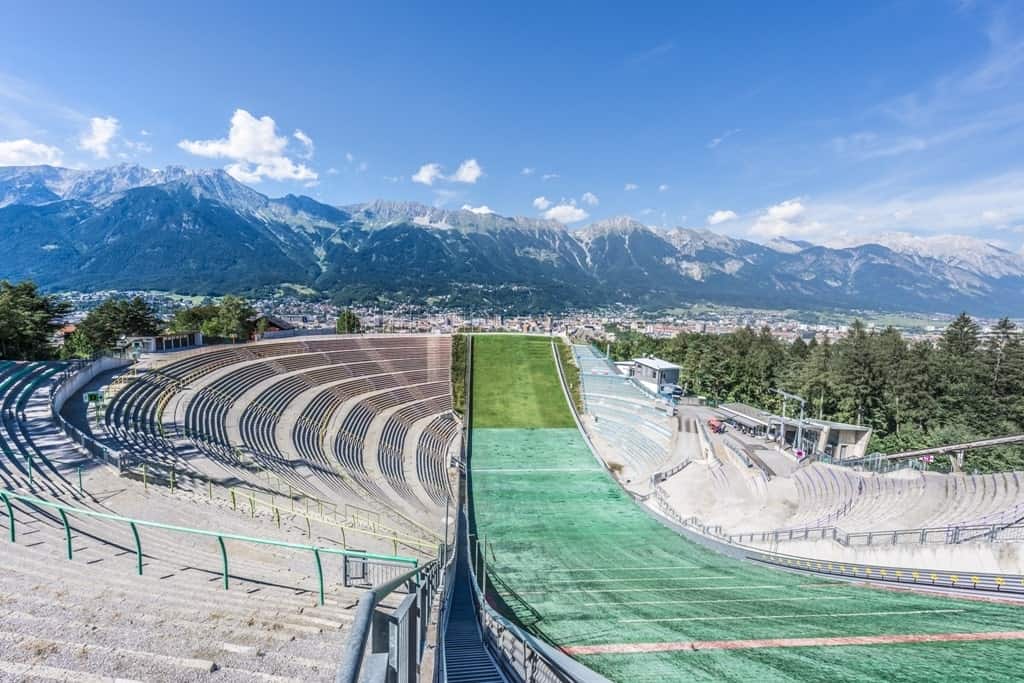
Hovering high above the city’s southern skyline is the Bergisel Ski Jump. This famous hilltop has seen some of the world greatest skiers fly through the air during the 1964 and 1976 Winter Olympics. You can take the lift up to the 50-meter-high tower for splendid panoramic views of Innsbruck. While you’re at the top, imagine what it must be like to have to make the hair-raising descent on skis!
Hours: November-May (closed on Tuesdays) from 10:00-17:00 (On weekends and public holidays from 09:00)
June-October daily from 09:00-18:00
Cost: 9.50 EUR
Tirol Panorama
While you’re atop Bergisel Hill take the time to visit the Tirol Panorama. This hill was the site of the Four Battles of Bergisel in 1809 when local rebels fought against Napoleon’s army and Bavarian forces. The battle was the inspiration for the Tirol Panorama, Tyrol’s largest oil painting by Zeno Diemer. The impressive canvas painting is a 360-degree experience that stretches over more than 1,000 square meters, making you feel like you’ve stepped right in the middle of the battle.
Hours: Wednesday-Monday 09:00-17:00 (open until 19:00 on Thursdays in July and August)
Cost: 8 EUR
Austria Day 7- Innsbruck to Vienna and flight home
Hopefully by now you’re inspired to travel to this small but mighty country using this exciting 7-day itinerary in Austria. You’ll have chance to explore all the best bits giving you a taste of what Austria has to offer while still leaving you some undiscovered gems to add to your next trip.
From breath-taking natural beauty to man-made works of art and architecture, Austria really does have it all. Another added bonus of this European treasure is that varies so much from season to season; you could visit year after year to witness the changing scenery and different activities on offer!

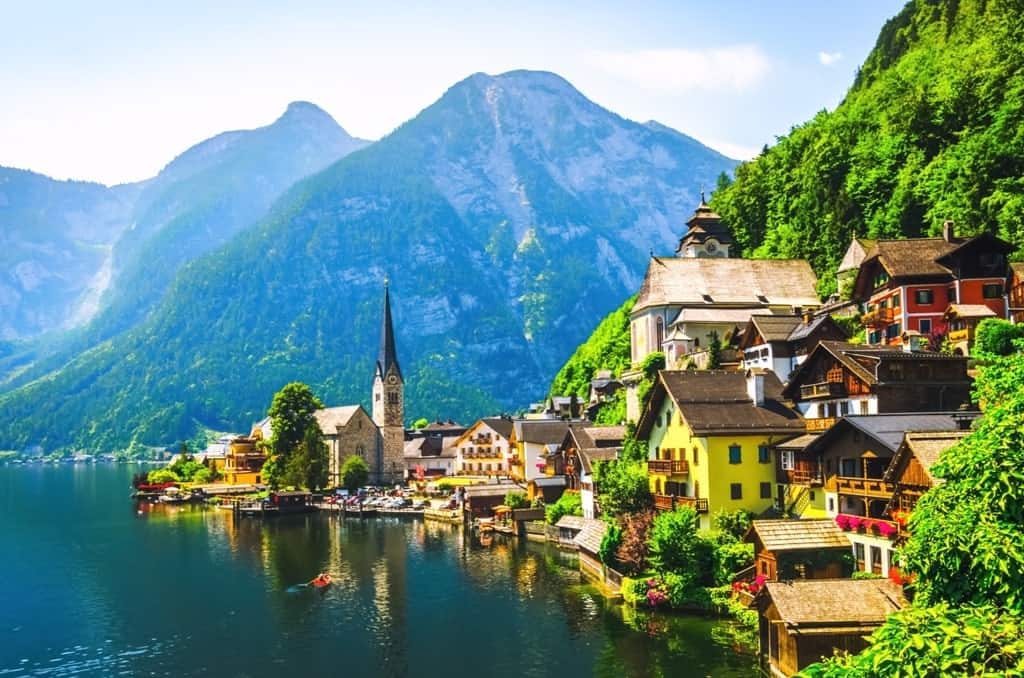
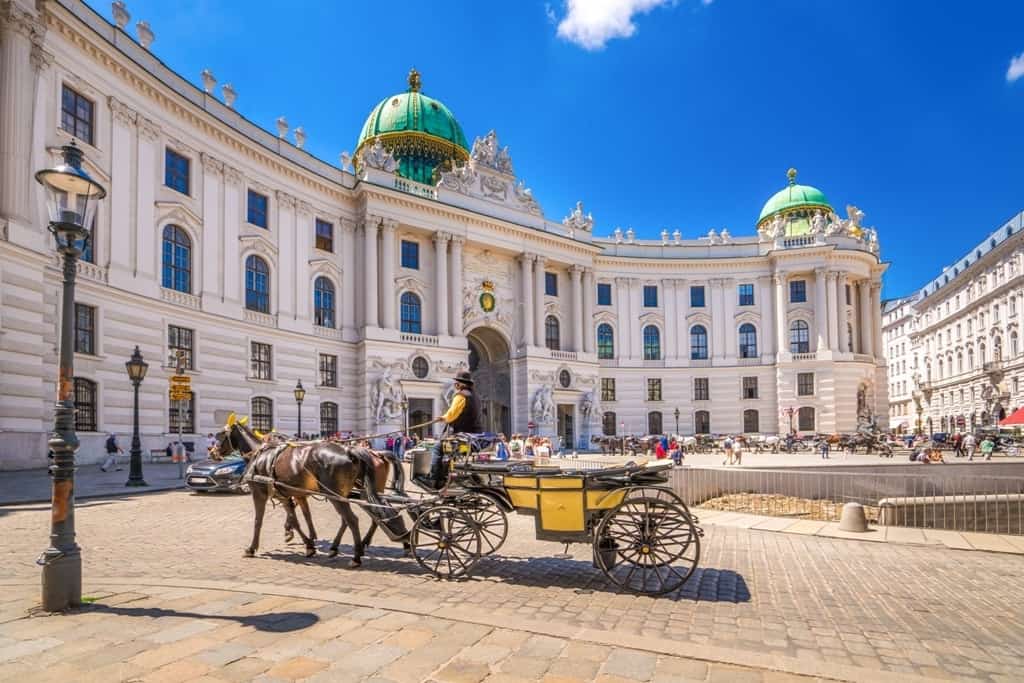
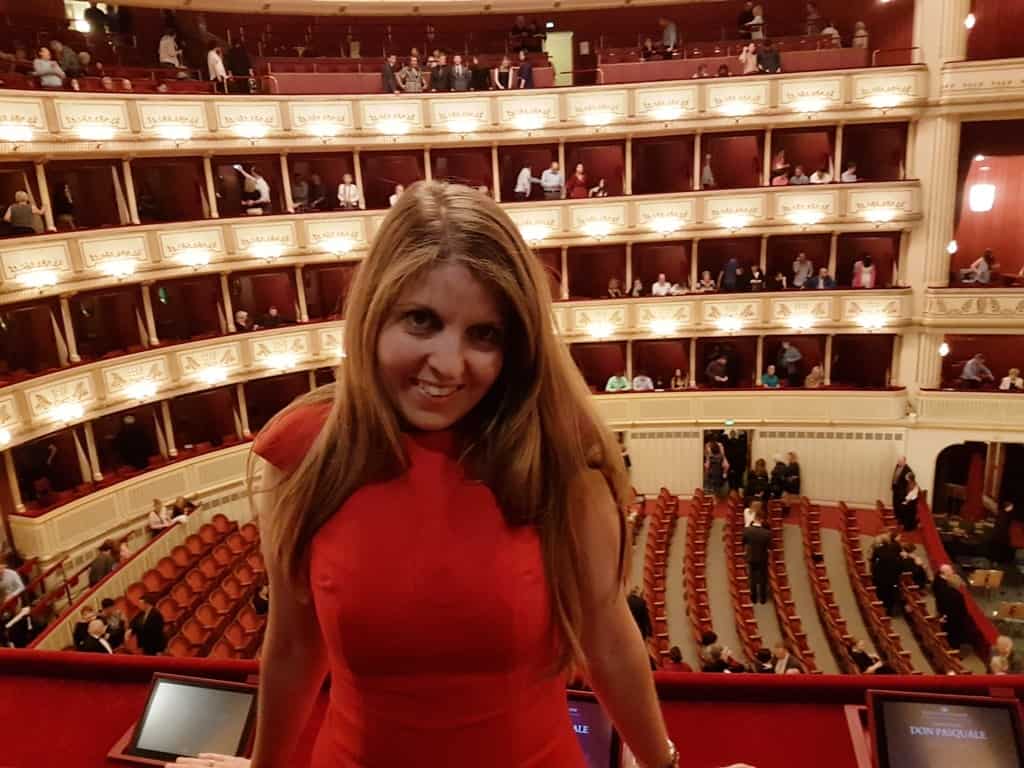
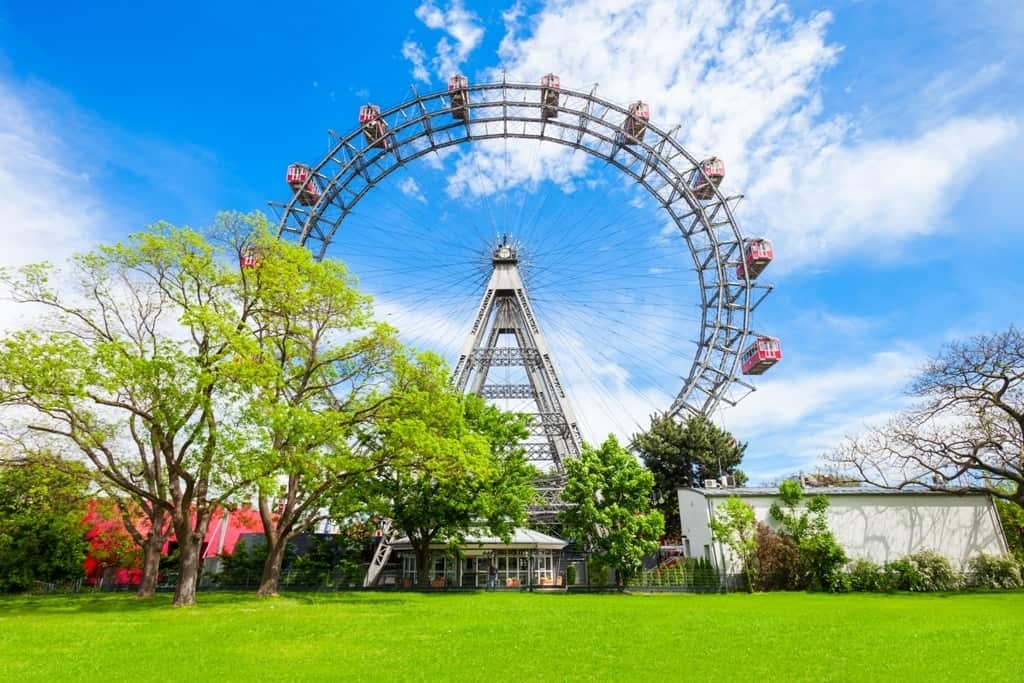
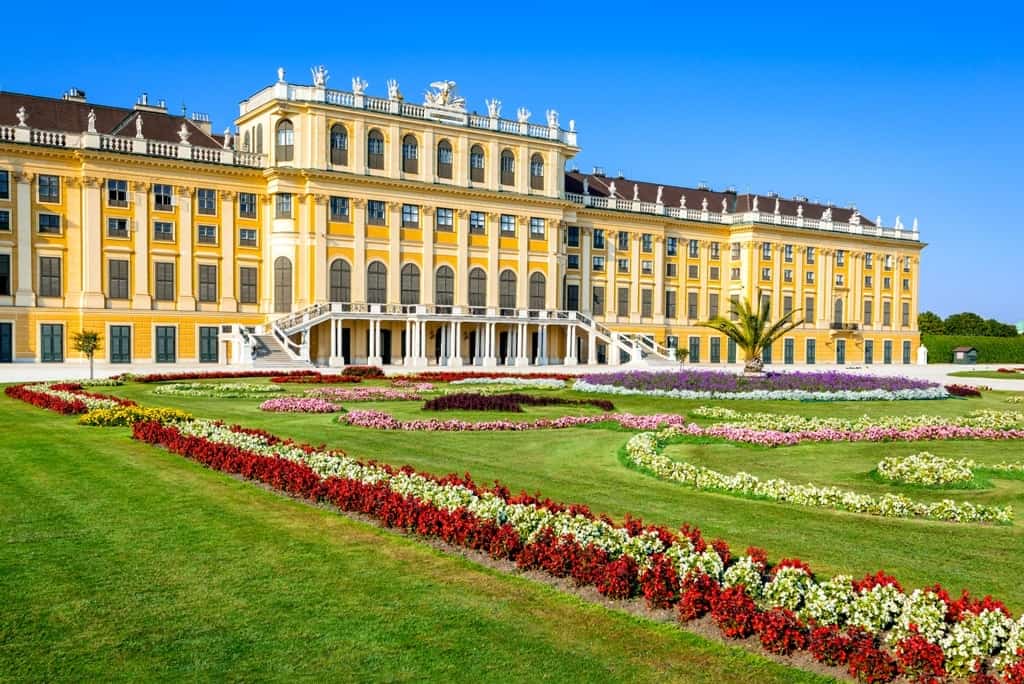
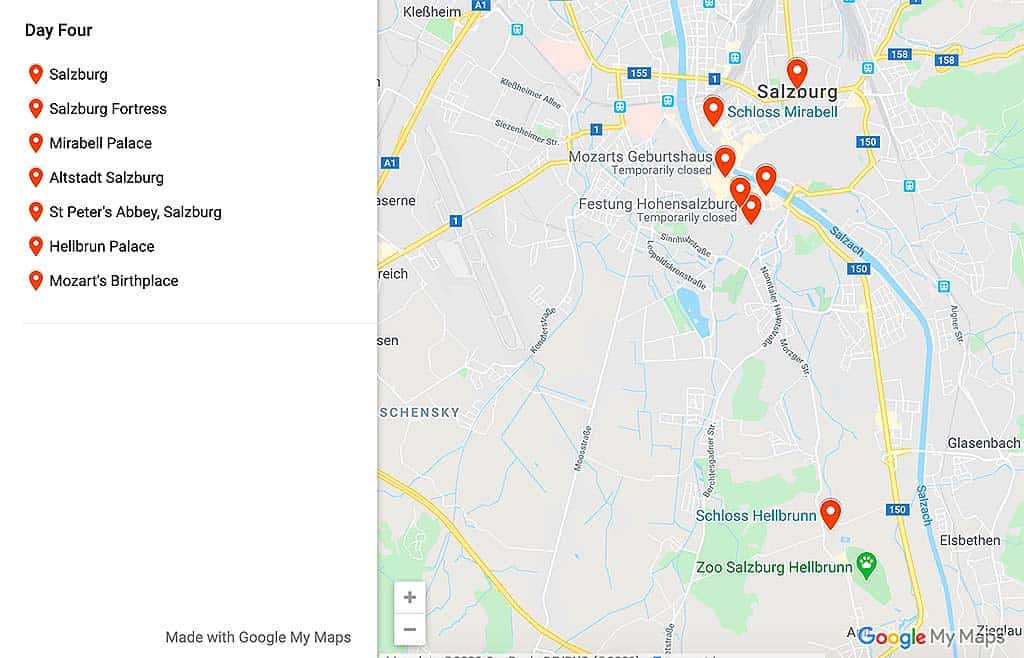
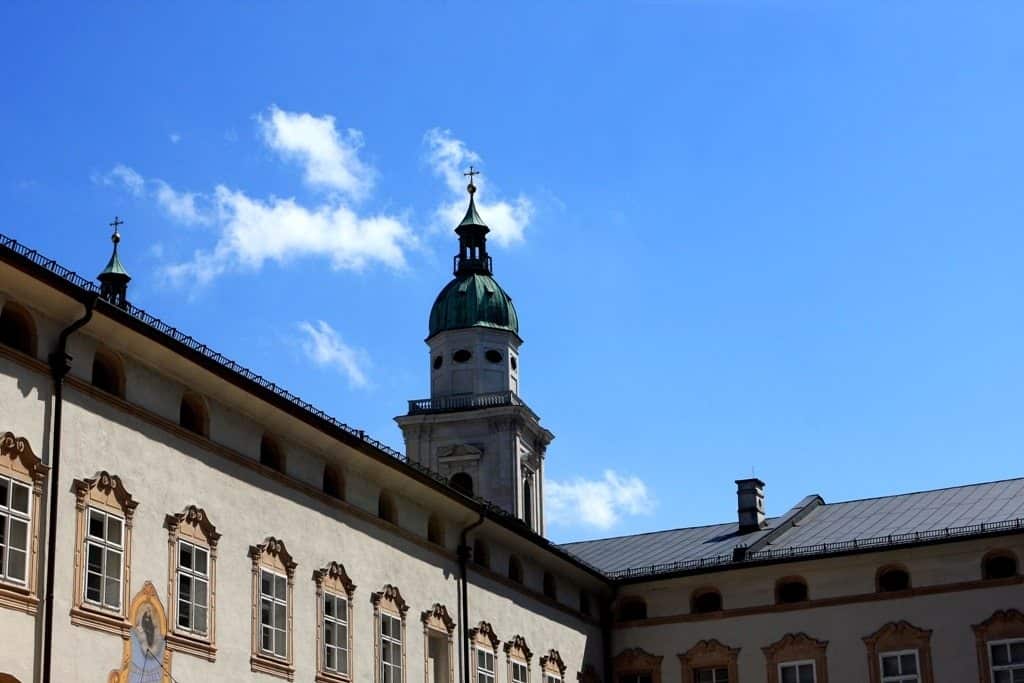
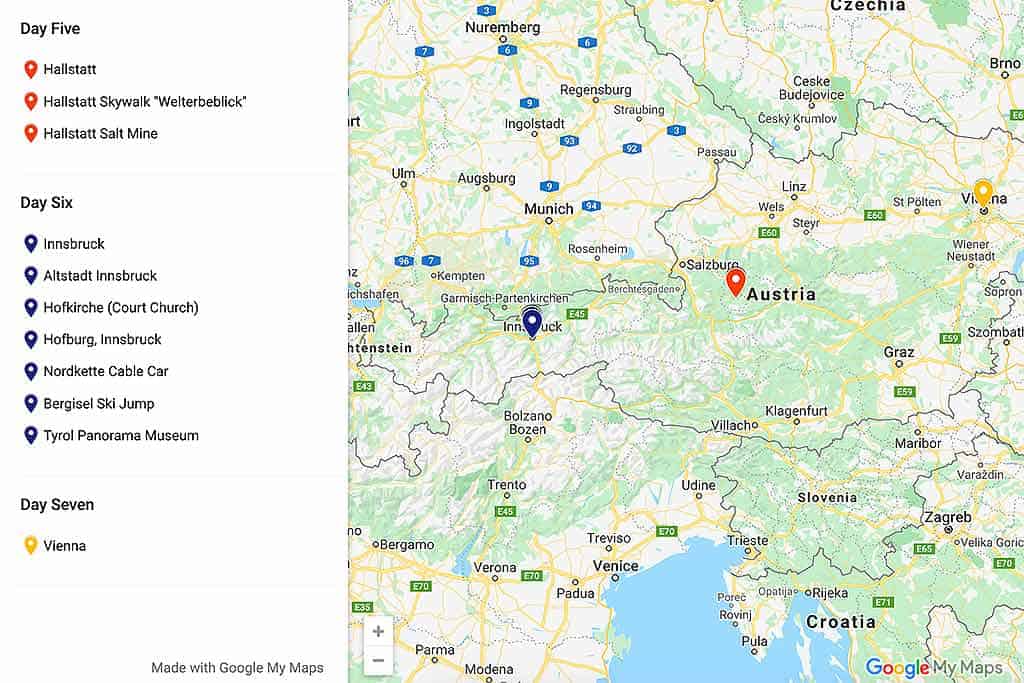
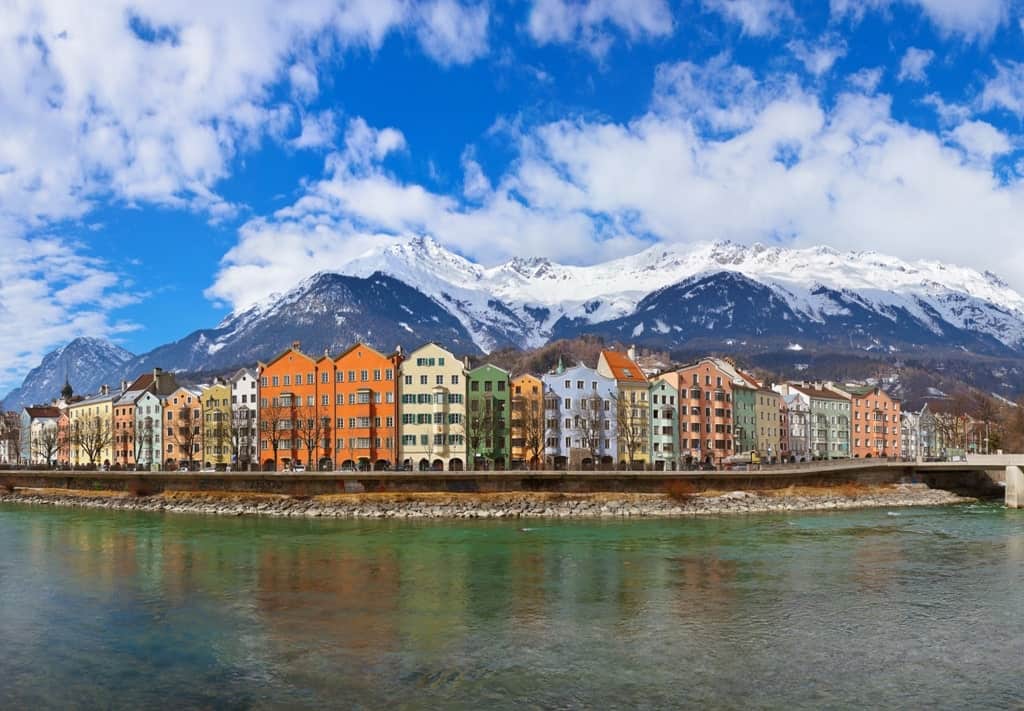
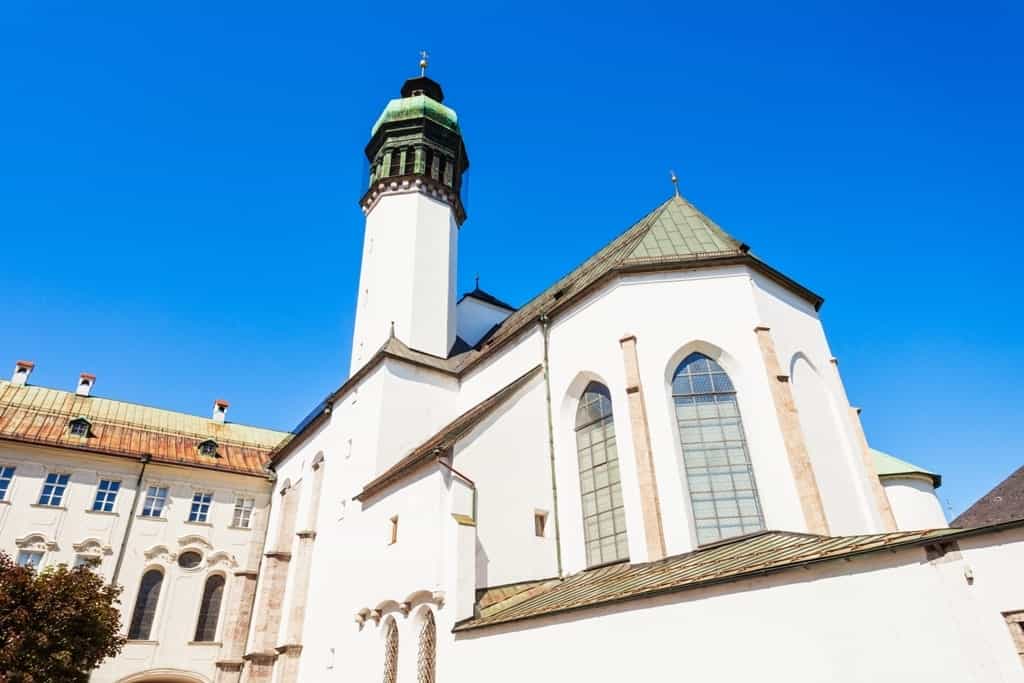
Nice post! Thanks for sharing!
this is a superb itinerary, i am travelling from india, family of 4. and plan to follow this one to the t.